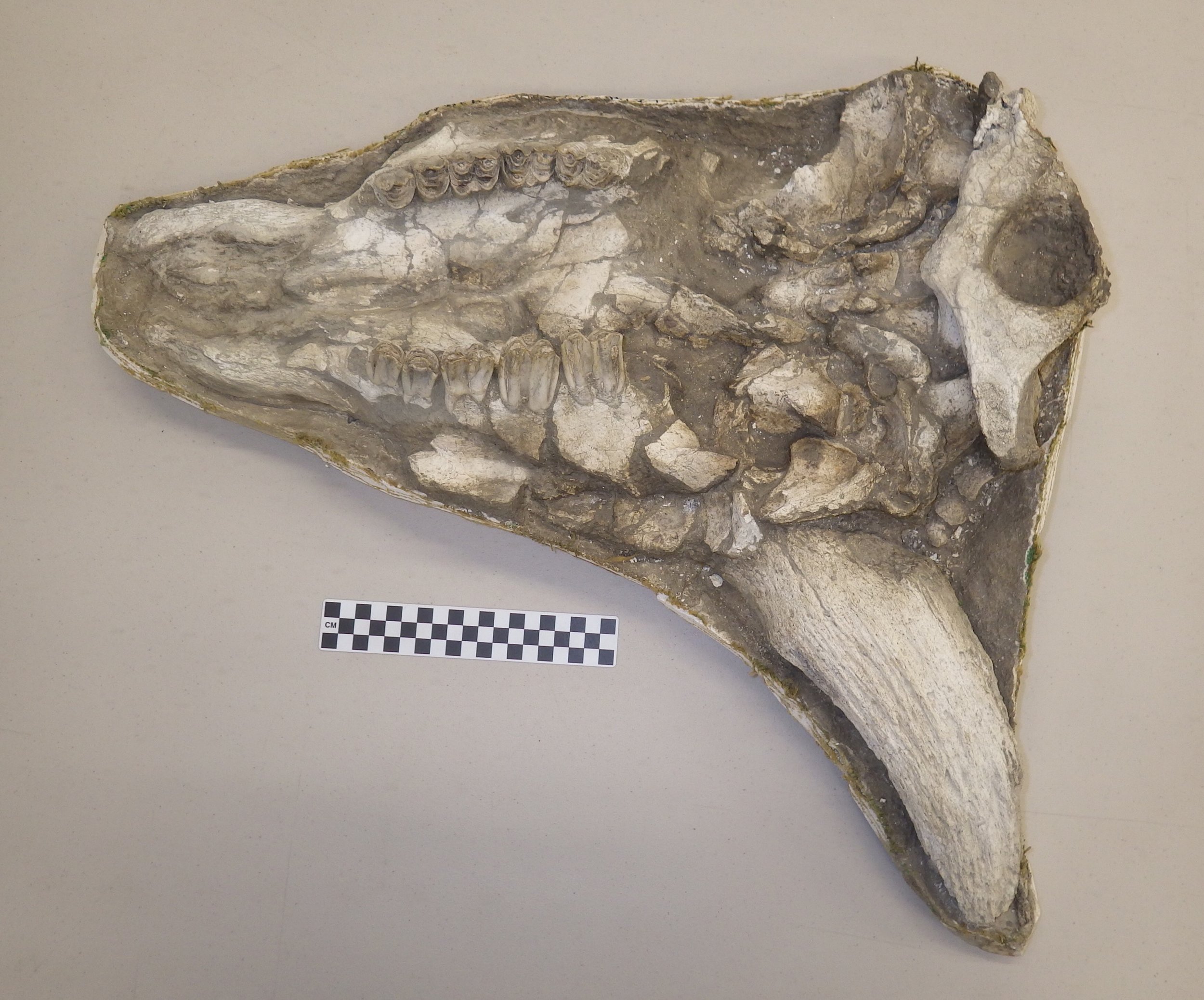 Bison are among the most common large animals from the Diamond Valley Lake region, and we have a number of nice specimens at the Western Science Center. Shown above is a cranium of Bison antiquus, one of several such skulls in our collection.This skull, while incomplete, is in pretty good shape. It's still in its field jacket, and only partially prepared, so only the ventral (bottom) side is visible. The front of the skull is to the left. The left horn core is noticeably missing, and there is some crushing of the skull that's most clearly visible along the right side (bottom of the image). The 2nd premolar is missing on each side, but the other teeth are all present. If you're looking carefully, you might have noticed that there are no incisor teeth in the front of the mouth. Bison don't have incisors in the upper jaws, a character they share with other "horned ruminants" (Infraorder Pecora). The mass of bone at the back of the skull (on the right side of the image) is the atlas (first neck vertebra), more-or-less still attached to the skull.There are two different species of bison present in the Pleistocene deposits at Diamond Valley Lake, the smaller Bison antiquus and the larger, longer-horned Bison latifrons. (When I say "smaller", that's relative; B. antiquus was still larger than modern bison.) Bison antiquus seems to be the more common of the two fossil species in this area. It's generally thought that B. antiquus is the direct ancestor to the modern bison, Bison bison.
Bison are among the most common large animals from the Diamond Valley Lake region, and we have a number of nice specimens at the Western Science Center. Shown above is a cranium of Bison antiquus, one of several such skulls in our collection.This skull, while incomplete, is in pretty good shape. It's still in its field jacket, and only partially prepared, so only the ventral (bottom) side is visible. The front of the skull is to the left. The left horn core is noticeably missing, and there is some crushing of the skull that's most clearly visible along the right side (bottom of the image). The 2nd premolar is missing on each side, but the other teeth are all present. If you're looking carefully, you might have noticed that there are no incisor teeth in the front of the mouth. Bison don't have incisors in the upper jaws, a character they share with other "horned ruminants" (Infraorder Pecora). The mass of bone at the back of the skull (on the right side of the image) is the atlas (first neck vertebra), more-or-less still attached to the skull.There are two different species of bison present in the Pleistocene deposits at Diamond Valley Lake, the smaller Bison antiquus and the larger, longer-horned Bison latifrons. (When I say "smaller", that's relative; B. antiquus was still larger than modern bison.) Bison antiquus seems to be the more common of the two fossil species in this area. It's generally thought that B. antiquus is the direct ancestor to the modern bison, Bison bison.
